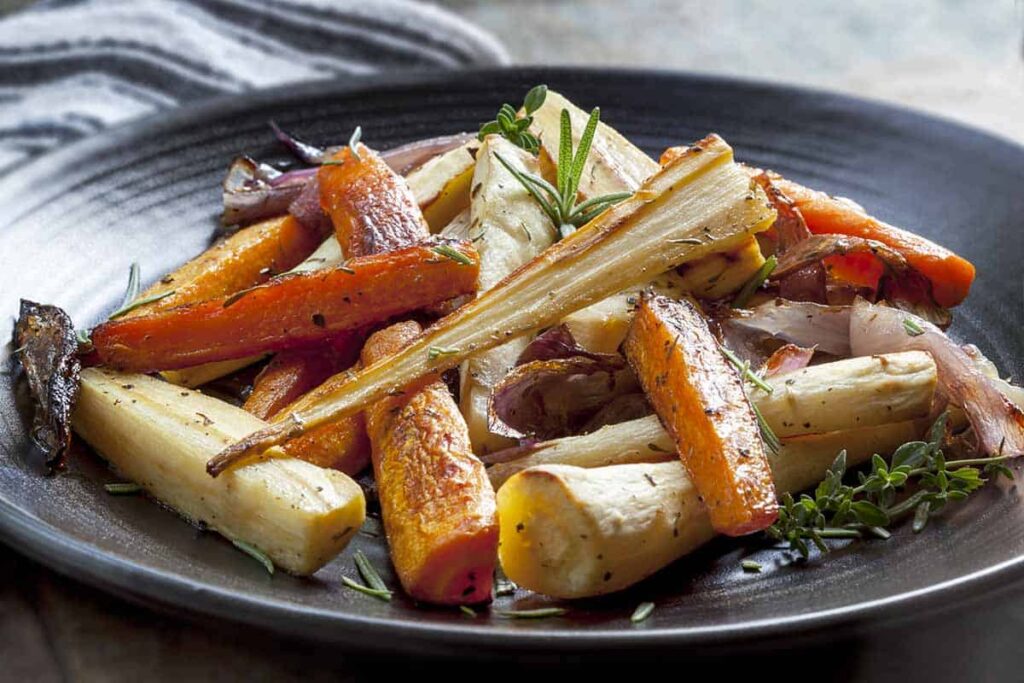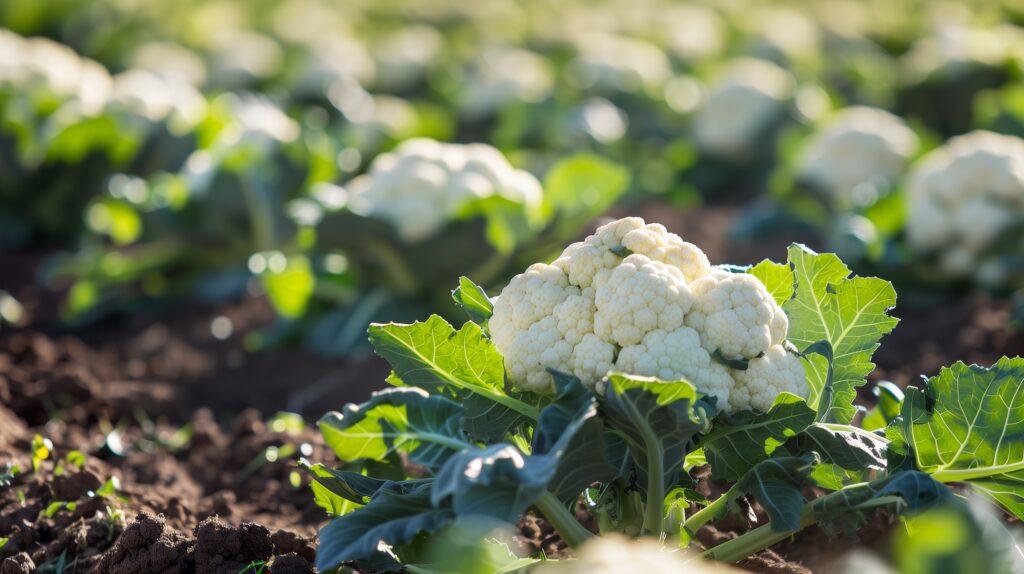
The Ultimate Cauliflower Superfood Guide – Benefits, Cooking Tips, and Nutritional Comparisons
Cauliflower, often overshadowed by its vibrant cousins like broccoli and kale, is finally taking its rightful place in the spotlight. This versatile cruciferous vegetable is not just a humble ingredient but a powerhouse of nutrition, offering a wide range of health benefits. Whether you’re a seasoned health enthusiast or just beginning your journey toward healthier eating, cauliflower’s adaptability ensures it can complement countless dishes, from hearty soups to crunchy snacks.
One of the simplest and most delightful ways to enjoy this nutrient-packed vegetable is in a fresh, flavourful salad. With its mild taste that readily absorbs other ingredients’ flavours, cauliflower is a culinary chameleon, perfect for creating colourful and healthy meals.
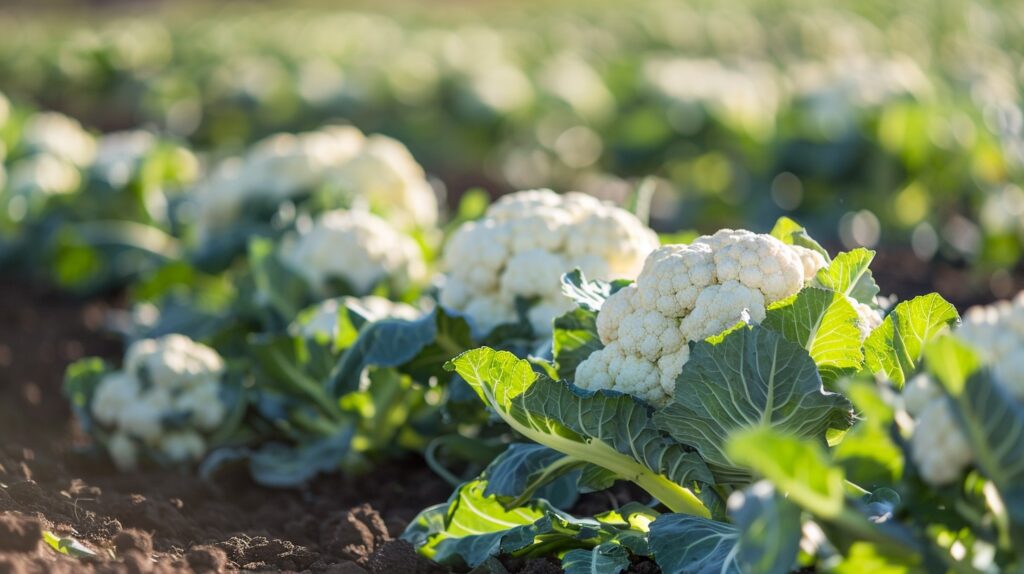
Cauliflower’s adaptability in the kitchen and its diverse range of varieties make it an incredibly versatile and valuable addition to any healthy diet. Understanding the different cauliflower varieties, proper storage techniques, and various cooking methods can help you make the most of this nutritious vegetable. Whether you’re a fan of its natural sweetness when roasted, enjoy its tender texture when steamed, or appreciate the smoky flavor that grilling brings out, there are countless ways to incorporate cauliflower into your culinary repertoire. By exploring its potential, you can elevate your dishes with the unique flavors and nutritional benefits that cauliflower has to offer.
Cauliflower Varieties and Their Uses
Cauliflower comes in several varieties, each with its unique characteristics and culinary uses:
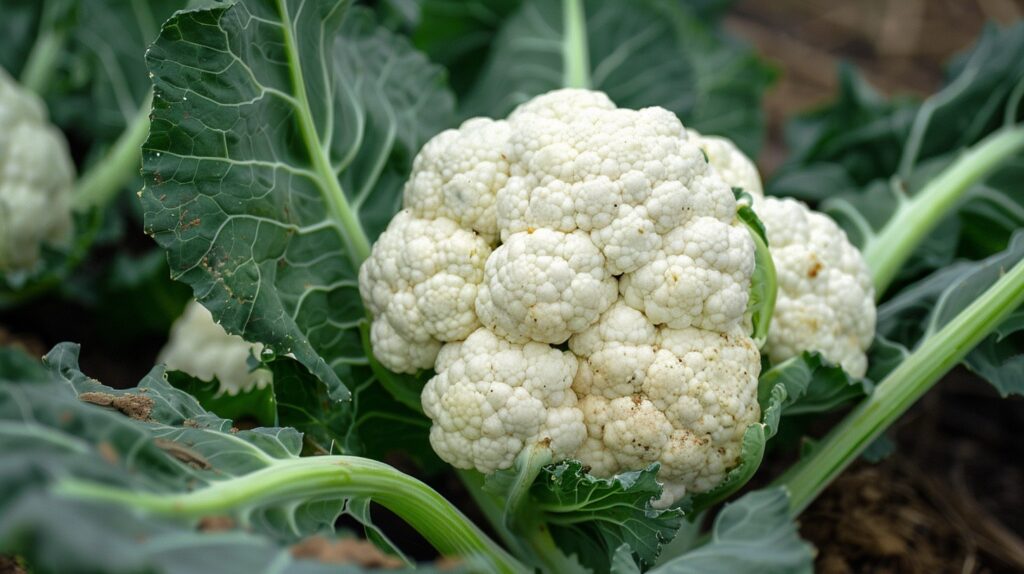
White Cauliflower
The most common variety is known for its mild flavour and creamy texture. It’s perfect for making cauliflower rice or mash or as a base for soups.
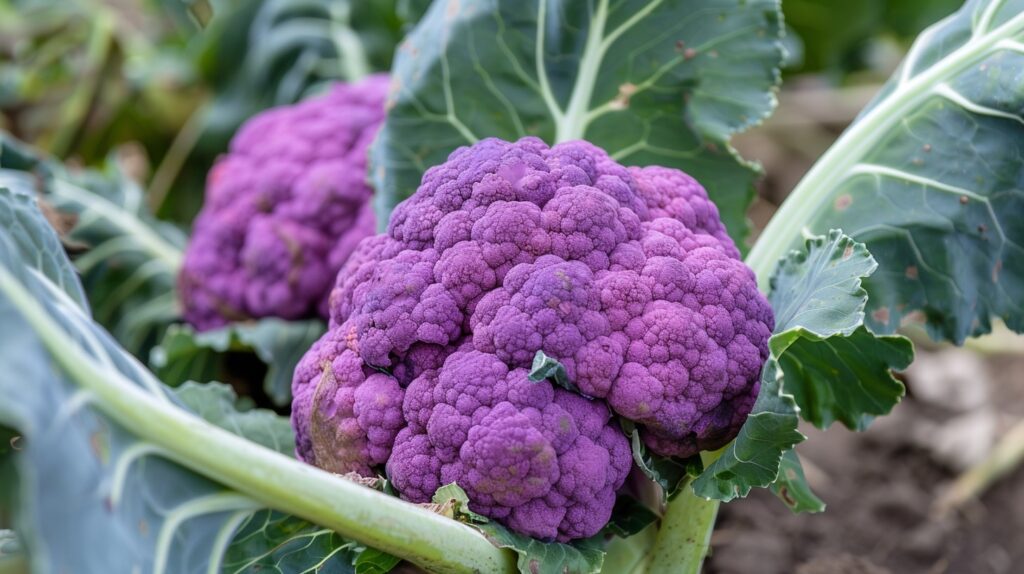
Purple Cauliflower
Rich in antioxidants like anthocyanins, this variety has a slightly sweeter flavour and adds a pop of colour to any dish, making it ideal for salads and roasted vegetable platters.
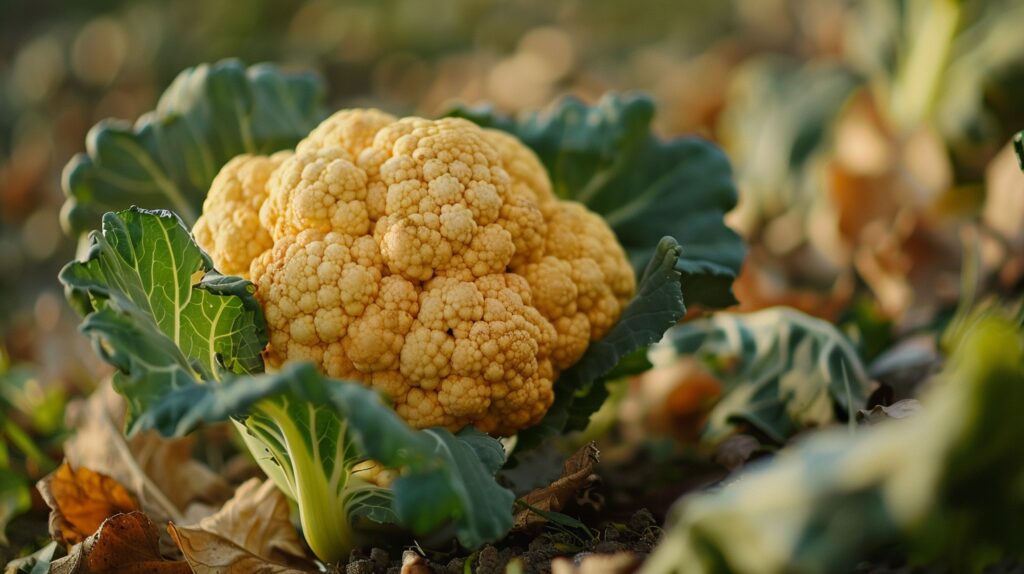
Orange Cauliflower
Also known as “cheddar” cauliflower, this variety is high in beta-carotene, giving it its vibrant colour. It has a slightly nutty taste and is great for roasting or using in gratins.
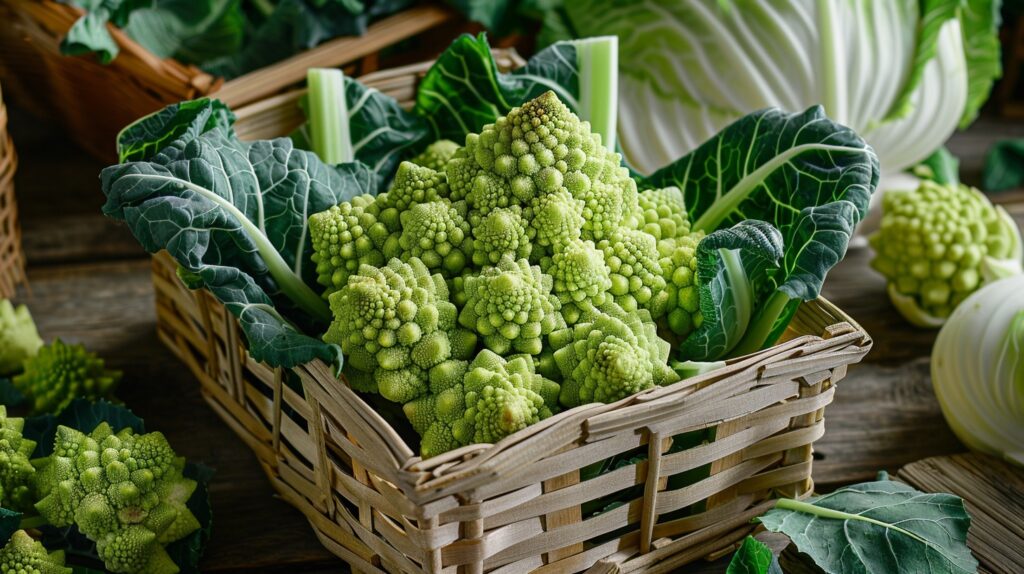
Green Cauliflower (Romanesco)
This eye-catching variety has a firmer texture and a nuttier flavour, making it perfect for steaming, stir-frying, or serving raw in salads.
Understanding these varieties allows you to experiment with different flavours and textures, making your cauliflower dishes even more exciting.
Cauliflower Cooking Techniques to Unlock Flavour and Texture
Cauliflower’s versatility in the kitchen is unmatched, making it a staple ingredient in various dishes. Whether you prefer it raw, roasted, or mashed, understanding the different cooking techniques can help you unlock the full potential of this nutritious vegetable.
Popular Cooking Methods
Roasting
Roasting cauliflower is one of the most popular methods, as it brings out the vegetable’s natural sweetness and creates a crispy texture. Toss cauliflower florets with olive oil, salt, and your favourite spices, then roast them in the oven at 200°C (400°F) for 25-30 minutes until golden brown. This method is ideal for side dishes, salads, or snacks.
Steaming
Steaming is a gentle cooking method that preserves cauliflower’s nutrients while keeping it tender. It’s perfect for those who prefer a softer texture without losing the vegetable’s natural flavour. Steam the florets for 5-7 minutes until they’re tender but still slightly firm. Steamed cauliflower works well in salads, purees, or as a low-calorie side dish.
Stir-Frying
Stir-frying is a quick and easy way to prepare cauliflower, especially when you’re short on time. Cut the cauliflower into small florets and stir-fry them in a hot pan with oil, garlic, and your choice of vegetables or protein. This method retains the cauliflower’s crunch and is perfect for Asian-inspired dishes.
Grilling
Grilling cauliflower adds a smoky flavour that pairs beautifully with spices and marinades. Cut the cauliflower into thick “steaks” or keep the florets whole, brush with oil and seasoning, and grill over medium heat for about 5 minutes per side. Grilled cauliflower is a great addition to sandwiches, tacos, or meat substitutes in main courses.
Blending
For a creamy, comforting dish, blend steamed or boiled cauliflower into a smooth puree. This technique is often used to make cauliflower mash, a low-carb alternative to mashed potatoes. Add a touch of butter, garlic, and herbs to enhance the flavour. Pureed cauliflower can also be used as a base for soups or sauces.
Raw
Don’t overlook raw cauliflower! Its crunchy texture and mild flavour make it an excellent addition to salads or as a healthy snack. Pair it with a dip like hummus or yoghurt for added flavour.
Quick Tip 1
Enhancing Flavour with Spices and Herbs
Cauliflower has a mild flavour that readily absorbs seasonings, making it a perfect canvas for a wide range of spices and herbs. Some popular pairings include:
- Garlic and Lemon – A classic combination that brightens the flavour of cauliflower, whether roasted or grilled.
- Cumin and Paprika – These spices add warmth and depth, especially when roasting or grilling cauliflower.
- Turmeric and Ginger – Perfect for creating a fragrant, golden-hued dish with anti-inflammatory benefits.
- Parsley and Coriander – Fresh herbs like parsley and coriander add a burst of freshness to raw or lightly cooked cauliflower dishes.
You can enjoy cauliflower in various delicious and nutritious ways by experimenting with different cooking techniques and flavour combinations, making it a versatile star in your culinary repertoire.
Cauliflower is more than just a low-carb substitute
Cauliflower isn’t just a versatile vegetable in the kitchen; it’s also a nutritional powerhouse that offers a wide range of health benefits. Rich in vitamins, minerals, and antioxidants, cauliflower supports overall wellness, making it an essential addition to any diet.
Essential Nutrients and Their Benefits
- Vitamin C – Cauliflower is an excellent source of vitamin C, an antioxidant that plays a crucial role in immune function, skin health, and the body’s ability to repair tissues. A single serving of cauliflower can provide almost 77% of the daily recommended vitamin C intake.
- Vitamin K – Essential for blood clotting and bone health, vitamin K is another vital nutrient found in cauliflower. Regular consumption of cauliflower can help maintain healthy bones and reduce the risk of osteoporosis.
- Fibre – Cauliflower’s high fibre content supports digestive health by promoting regular bowel movements and feeding beneficial gut bacteria. This helps reduce the risk of digestive disorders and can aid in weight management by keeping you fuller for longer.
- Folate or vitamin B9, is essential for pregnant women as it supports healthy fetal development. It also plays a role in DNA synthesis and repair, which is crucial for overall cellular health.
- Potassium is a key mineral that helps regulate fluid balance, muscle contractions, and nerve signals. Cauliflower’s potassium content makes it beneficial for heart health, helping to maintain healthy blood pressure levels.
- Antioxidants – Cauliflower is rich in antioxidants like glucosinolates and isothiocyanates, which have been shown to protect against inflammation and reduce the risk of chronic diseases such as heart disease and cancer.
- Phytonutrients – The phytonutrients in cauliflower, such as sulforaphane, have powerful anti-inflammatory properties. Sulforaphane, in particular, has been studied for its potential to protect against cancer by neutralising harmful free radicals and supporting the body’s detoxification processes.
Supporting a Healthy Lifestyle
Incorporating cauliflower into your diet is akin to inviting a health guardian into your kitchen. Its low-calorie count makes it an excellent choice for those looking to maintain a balanced diet without sacrificing flavour or fullness. Whether you’re enjoying it roasted, blended into soups, or raw in salads, cauliflower’s impressive nutritional profile supports everything from heart health to digestive wellness.
Quick Tip 2
Creative Serving Ideas
Cauliflower Steak
Slice the cauliflower into thick steaks and grill them, seasoning with olive oil, garlic, and herbs. Serve as a main course with a chimichurri sauce or salad.
Cauliflower Rice Bowl
In your favourite bowl recipe, replace traditional rice with cauliflower rice. Add grilled vegetables, a protein of your choice, and a tahini or soy sauce drizzle for a nutritious and filling meal.
Cauliflower Pizza Crust
Use cauliflower as the base for a gluten-free pizza crust. Top with tomato sauce, mozzarella, fresh basil, and your favourite toppings for a healthier take on pizza night.
For those following specific diets, such as low-carb or gluten-free, cauliflower is a versatile substitute for grains and legumes. Cauliflower rice, for example, is a popular alternative to traditional rice, offering a lower-carb option that’s just as satisfying. Similarly, cauliflower can make a gluten-free pizza crust, allowing you to enjoy your favourite dishes without compromising your dietary goals.
By regularly including cauliflower in your meals, you’ll enhance the flavour of your dishes and significantly boost your intake of essential nutrients that support overall health and well-being.
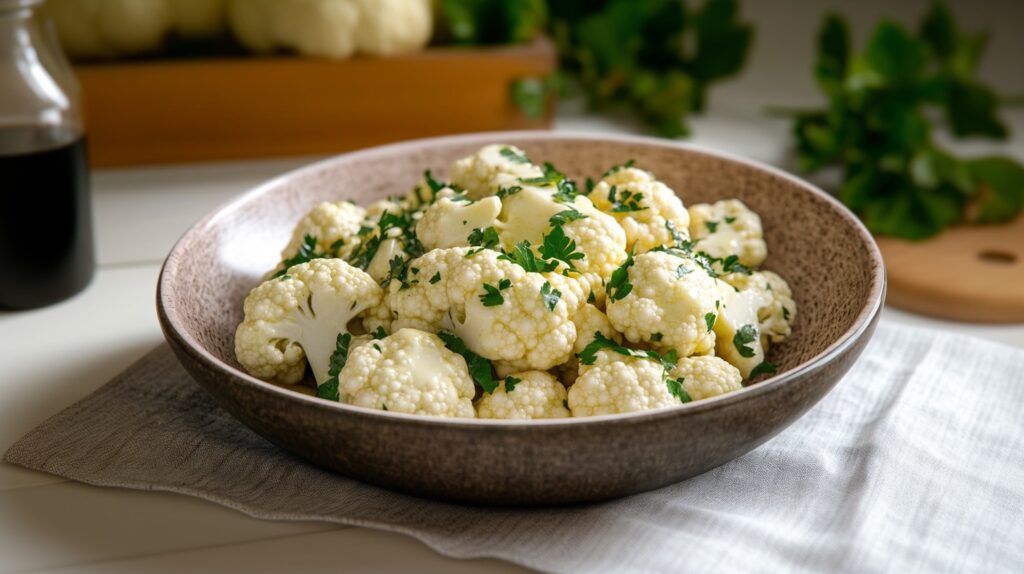
Preparing the Perfect Cauliflower Salad
Preparing a nutritious cauliflower salad with the right ingredients becomes joyful and straightforward. This recipe promises to tantalise your taste buds while simplifying your culinary routine, making it ideal for busy weekdays or a quick weekend lunch. The salad embodies the essence of healthy eating without the hassle, combining the mild, adaptable cauliflower flavour with a vibrant mix of fresh ingredients.
Let’s embark on a culinary journey where we transform these humble ingredients into a sensational cauliflower salad. This recipe is not only nutritious and delicious but also incredibly simple to prepare, making it the perfect addition to any meal plan.
Ingredients
- 1 Cauliflower (cut into florets)
- 6 tablespoons Olive oil
- 3 tablespoons White wine vinegar
- 1 tablespoons Fresh flat-leaf parsley (chopped)
- 2 tablespoons Tarragon (fresh) (chopped)
- Salt and pepper
- Olive oil
Instructions
- Cook the cauliflower florets in salted boiling water until al dente
- Drain ,leave to cool, then place in a salad bowl
- Mix together the olive oil and vinegar in a bowl, add the parsley and tarragon and season with salt and pepper
- Use to dress the cauliflower and leave to stand for 1 hour
- Serve separately with mayonnaise with a little mustard
Perfect Pairings Enhancing Cauliflower with Complementary Flavours
Cauliflower’s mild and adaptable flavour makes it the perfect base for various culinary creations. Whether preparing a simple salad or a more elaborate dish, knowing how to pair cauliflower with complementary ingredients can take your meals to the next level.
Complementary Flavours and Ingredients
- Garlic and Lemon are classic combinations that never fail to enhance cauliflower’s natural taste. The sharpness of garlic and the brightness of lemon juice can transform roasted cauliflower into a flavour-packed side dish.
- Cheese and Cauliflower are a match made in culinary heaven. Cheese adds richness and depth to cauliflower dishes, whether it’s a creamy cheddar in a cauliflower gratin or a sprinkle of Parmesan over roasted florets.
- Herbs – Fresh herbs like parsley, coriander, and dill bring freshness to cauliflower, particularly in salads and lighter dishes. For a more robust flavour, consider using thyme or rosemary in roasted or grilled cauliflower recipes.
- Spices – Cauliflower is a blank canvas that readily absorbs the flavours of various spices. Cumin, turmeric, and paprika add warmth and complexity, making cauliflower a standout ingredient in curries and Middle Eastern-inspired dishes. For a bit of heat, try adding a pinch of chilli flakes.
- Nuts and Seeds – Adding a crunchy element like toasted almonds, sunflower seeds, or pine nuts can elevate the texture of cauliflower dishes. These pairings work exceptionally well in salads, satisfyingly contrasting the soft texture of cooked cauliflower.
- Bacon or Pancetta – For those who enjoy a touch of indulgence, crispy bacon or Pancetta crumbles add a salty, smoky flavour that complements cauliflower’s mild taste. This combination works beautifully in casseroles, salads, or as a topping for cauliflower soup.
Creating Balanced Dishes
When crafting meals with cauliflower, it’s essential to consider the balance of flavours and textures. Cauliflower’s subtle taste allows it to act as a neutral base that pairs well with bold and delicate flavours. For instance, pairing cauliflower with something tangy, like a yoghurt sauce or vinaigrette, can brighten the dish, while adding a sweet element, like roasted butternut squash or caramelised onions, can create a more complex flavour profile.
For a complete meal, consider combining cauliflower with a protein source such as grilled chicken, tofu, or legumes. This not only enhances the dish’s nutritional value but also makes it more satisfying.
By experimenting with different pairings and serving ideas, you can keep your cauliflower dishes exciting and full of flavour, making this versatile vegetable a staple in your kitchen.
Quick tip 3
Storing Cauliflower for Maximum Freshness
To fully enjoy cauliflower’s benefits, it’s essential to store it properly. When handled correctly, fresh cauliflower can retain its nutritional value, flavour, and texture for an extended period.
Proper Storage Techniques
- Refrigeration – Store cauliflower in the crisper drawer of your refrigerator. Keep it in its original packaging or wrap it loosely in a plastic bag with a few holes for air circulation. This helps prevent moisture buildup, which can lead to spoilage. Cauliflower can last up to one week in the refrigerator when stored this way.
- Freezing – If you’ve bought cauliflower in bulk or want to preserve it for longer, freezing is an excellent option. First, blanch the cauliflower florets in boiling water for 3 minutes, then transfer them to an ice bath to cool. Drain thoroughly, spread the florets on a baking sheet to freeze individually, and then transfer them to a freezer-safe bag. Frozen cauliflower lasts up to 12 months and is perfect for soups, stews, and smoothies.
- Avoiding Moisture – Cauliflower is prone to moisture-related spoilage, so always ensure it’s dry before storing. If you notice moisture inside the storage bag, wipe it away to extend the cauliflower’s shelf life.
Recognising Freshness
When selecting cauliflower, look for heads that are firm and tightly packed with creamy white florets. The leaves should be vibrant green and unblemished, wrapping snugly around the cauliflower. A fresh cauliflower should feel heavy for its size, indicating its quality and freshness. Avoid heads with brown spots or a strong odour, as these are signs of age and spoilage.
By storing cauliflower properly, you can enjoy its peak flavour and nutritional benefits whenever you’re ready to use it, whether in a salad, roasted dish or as a low-carb substitute in your favourite recipes.
A Sustainable and Green Choice for Your Diet
Cauliflower isn’t just a nutritional powerhouse; it’s also a sustainable choice for those looking to make environmentally conscious diet decisions. As concerns about climate change and environmental impact grow, choosing sustainable foods like cauliflower can significantly reduce your carbon footprint and support eco-friendly farming practices.

Environmental Benefits of Cauliflower
- Low Water Usage: Compared to many other vegetables, cauliflower requires relatively little water to grow, making it a more sustainable crop in areas where water conservation is essential. This is particularly important in regions prone to drought or with limited water resources.
- Efficient Land Use: Cauliflower is a high-yield crop that produces a substantial amount of food per acre. This efficient use of land helps reduce the environmental impact of farming, as less land is needed to grow a sufficient amount of cauliflower to meet demand.
- Lower Carbon Footprint: Cauliflower production has a relatively low carbon footprint compared to more resource-intensive crops like rice or wheat. This is due to its lower need for water, fertilisers, and pesticides, which contribute to greenhouse gas emissions.
- Support for Biodiversity: Cauliflower is often grown as part of crop rotation systems, which help maintain soil health and support biodiversity. Farmers can reduce soil depletion and minimise the need for chemical fertilisers by alternating cauliflower with other crops, promoting a healthier ecosystem.
Seasonal Eating and Local Sourcing
Eating cauliflower when it’s in season ensures you’re getting the freshest produce and supports sustainable farming practices. Seasonal vegetables are typically grown with fewer artificial inputs, such as heating or cooling in greenhouses, reducing their environmental impact. In addition, purchasing seasonal produce from local markets means your cauliflower has travelled fewer food miles, lowering its carbon footprint.
In Australia, cauliflower peaks from late autumn through winter, making it an ideal ingredient for hearty, warming dishes during the cooler months. Choosing cauliflower during its natural growing season increases the likelihood of enjoying its best flavour and nutritional benefits.
Reducing Food Waste with Cauliflower
Cauliflower is a versatile vegetable that can be used in its entirety, helping to reduce food waste. Here are some tips for using every part of the cauliflower:
- Florets: The most commonly used cauliflower part, perfect for roasting, steaming, or adding to salads.
- Stems: Often discarded, the stems are just as nutritious as the florets and can be sliced thin and added to stir-fries, soups, or purees.
- Leaves: Cauliflower leaves are edible and can be treated like other leafy greens. Sauté them with garlic and olive oil, or add them to soups and stews for extra flavour and nutrients.
By utilising the whole cauliflower, you’re getting more value for your money and contributing to a reduction in food waste, a significant environmental concern.
Quick tip 4
Cauliflower Versus Other Vegetables – A Nutritional Comparison
When it comes to making healthy diet choices, understanding how cauliflower compares to other popular vegetables can help you appreciate its unique benefits. While all vegetables offer valuable nutrients, cauliflower shines in several key areas, making it a standout choice for those looking to enhance their overall health.
Cauliflower vs. Broccoli
Broccoli and cauliflower are both members of the cruciferous vegetable family, and they share many similarities, including their impressive nutrient profiles. However, there are some differences worth noting:
- Vitamin C: While both are excellent sources of vitamin C, broccoli typically contains slightly more. However, cauliflower still provides a significant amount, making it a strong contender supporting immune health.
- Fibre Content: Broccoli generally has a higher fibre content than cauliflower, which may make it slightly more effective for promoting digestive health. However, cauliflower’s lower fibre content makes it easier for those with sensitive stomachs to digest.
- Calorie Count: Both vegetables are low in calories, but cauliflower has a slightly lower calorie count, making it an excellent option for those focused on weight management.
- Versatility: Cauliflower is often considered more versatile in the kitchen, particularly for those on low-carb or gluten-free diets. It can be transformed into rice, pizza crusts, or even mashed as a potato substitute, offering more culinary flexibility than broccoli.
Cauliflower vs. Kale
Kale has gained a reputation as a superfood, but how does it compare to cauliflower?
- Nutrient Density: Kale is rich in vitamins A, C, and K, as well as antioxidants like lutein and zeaxanthin, which are beneficial for eye health. While cauliflower doesn’t quite match kale’s nutrient density, it still offers a well-rounded profile of vitamins and minerals, including significant amounts of vitamins C and K.
- Taste and Texture: Kale has a more robust, distinct flavour and a more rigid texture, which some people may find less appealing. Conversely, Cauliflower has a milder taste and a more versatile texture, making it easier to incorporate into a variety of dishes.
- Anti-Inflammatory Properties: Both cauliflower and kale contain compounds that have anti-inflammatory effects. However, cauliflower’s high glucosinolates, which convert into sulforaphane during digestion, give it a unique edge in combating inflammation and supporting detoxification processes.
Cauliflower vs. Potatoes
For those on a low-carb diet, cauliflower is often used as a potato substitute. Here’s how they compare:
- Carbohydrates: Cauliflower is much lower in carbohydrates than potatoes, making it a popular choice for those following keto or low-carb diets. A cup of cauliflower has about 5 grams of carbs, while the same amount of potatoes contains around 26 grams.
- Calories: Cauliflower is also lower in calories, with about 25 calories per cup compared to over 100 calories in a cup of potatoes. This makes cauliflower an excellent option for those looking to reduce their calorie intake.
- Nutrient Profile: While potatoes are higher in certain nutrients like potassium and vitamin B6, cauliflower offers a more diverse range of vitamins and minerals, including significant amounts of vitamin C, K, and folate.
Cauliflower vs. Rice
Cauliflower rice has become a popular low-carb alternative to traditional rice. Here’s why:
- Calorie and Carb Content: Cauliflower rice is much lower in calories and carbohydrates than white or brown rice. This makes it an excellent choice for those looking to reduce their carb intake without sacrificing meal volume.
- Nutrient Density: While rice provides some nutrients, it lacks the vitamin-rich profile of cauliflower. Cauliflower rice is packed with vitamins C and K, fibre, and antioxidants, giving it a nutritional edge.
- Versatility: Cauliflower rice can be used in virtually any recipe that calls for rice, offering a similar texture but with added health benefits. It can also be seasoned or flavoured to suit various cuisines, making it a versatile kitchen staple.
By understanding how cauliflower compares to other vegetables, you can make more informed choices about incorporating it into your diet. Whether you’re looking to reduce carbs, increase your intake of specific vitamins, or enjoy a new culinary experience, cauliflower offers a unique combination of benefits that make it a valuable addition to any meal plan.
Cauliflower’s journey from an overlooked vegetable to a celebrated superfood is well-deserved. Its versatility in the kitchen, impressive nutritional profile, and environmental benefits make it an invaluable addition to any diet. Whether roasting it for a savoury side dish, blending it into a creamy soup, or enjoying it raw in a fresh salad, cauliflower adapts beautifully to various culinary applications.
Beyond its culinary appeal, cauliflower stands out for its health benefits. Rich in vitamins, minerals, and antioxidants, it supports everything from immune health to digestion, all while being low in calories and carbohydrates. By choosing cauliflower, you’re making a nutritious choice for your body and a sustainable one for the planet.
Incorporating cauliflower into your meals allows you to explore new flavours, textures, and health benefits. Whether you’re a seasoned cook or just starting your healthy eating journey, cauliflower offers endless possibilities to nourish your body and delight your taste buds. Embrace this humble yet extraordinary vegetable as a staple in your kitchen, and discover the myriad of ways it can enhance your well-being and culinary creativity.




